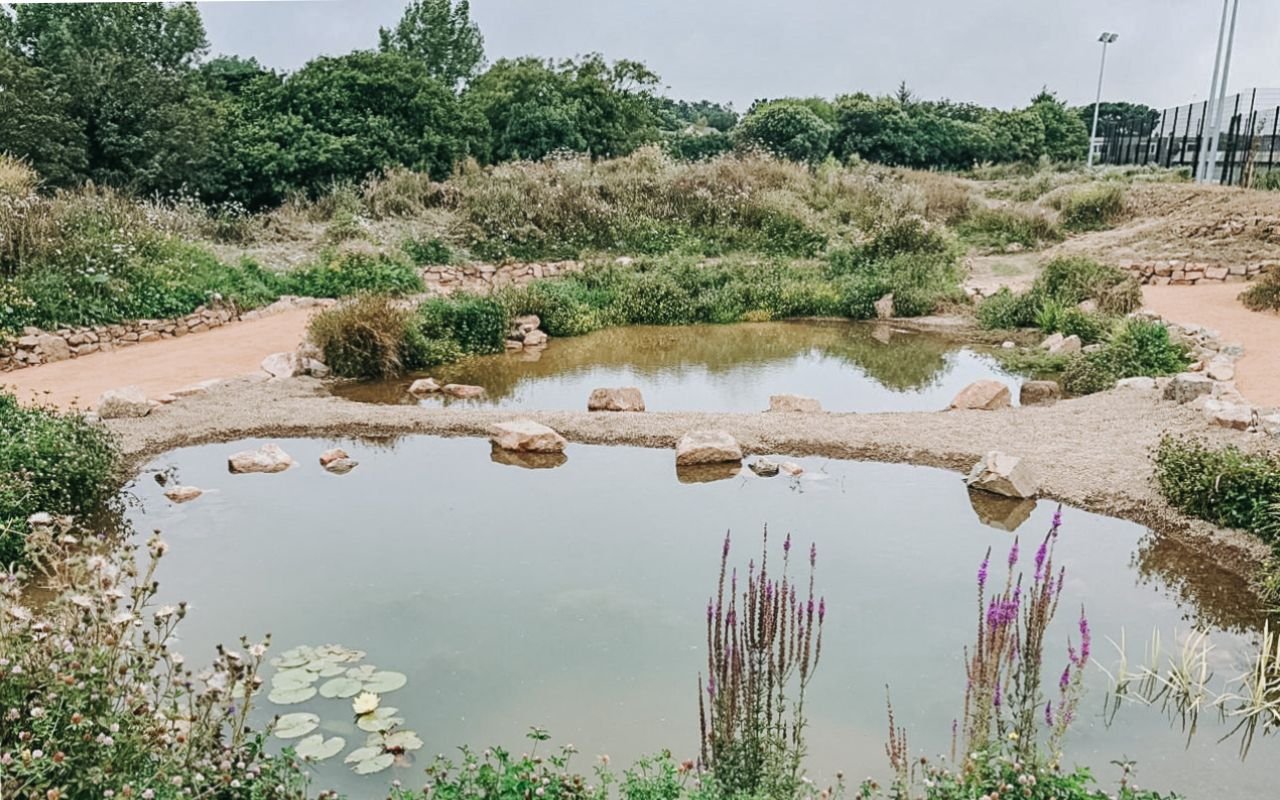Re-development on the edge of Ouaisne Nature Reserve
Project Area
Ecology & Habitats
Specialisms
Mitigation/Protection, Environmental Gain, Habitat Creation
Year
2020
A beautiful asset to both client and nature. This was a private development whereby the house, gardens and pond were removed to make way for a new development, on the edge of a nature reserve.
The ornamental fish pond at this site was found to have protected agile frog tadpoles and froglets present during our sweep-net surveys. Reptiles (Green lizards, slow worms and grass snakes) were found on site during the survey period, as well as amphibians (common toads, agile frogs and palmate newts) within the mature gardens. There were also rare Ant Lion larval pits were found on site within the sandy soil.
The location of the site on the boundary of a nature reserve meant that its suitability for all protected wildlife species was high, with the addition of a stream running down the edge of the site to feed the main breeding ponds on the nature reserve.
Challenges
As the pond was a breeding site for the very rare agile frog, a replacement pond was required on site prior to the removal of the existing pond. Our client was receptive to having a replacement ‘wildlife pond’ but wanted it to look in keeping with the new development and look suitably ornamental.
The clearance of the mature gardens and house needed to occur without harming the wildlife (mainly amphibians & reptiles) within this area.
Measures to prevent construction pollutants entering the stream that runs adjacent to the site into the nature reserve needed to be included in our Species Protection Plan.
Outcome and Species Protection
A new pond which was good for breeding amphibians but also in keeping with the new modern house design was designed and built by our team prior to any other works occurring on site. This pond was then fenced off / excluded from the main site to safeguard it during the main demolition and construction of the new house.
The gardens were cut and cleared carefully by our team following an Ecological Method Statement, and any protected wildlife found translocated under a Licence of the Conservation of Wildlife (Jersey) Law 2000.
A Pollution Prevention Plan was included in our Species Protection Plan to prevent pollutants such as cement from entering the feeder stream to nature reserve, including designated mixing areas filled with sand.
The new and existing boundary walls were made ‘permeable’ to amphibians so that they can move between the breeding pond and nature reserve.
The sand which contained the Ant Lion larvae was carefully dug up and spread on the Nature Reserve.
Success
High numbers of agile frog and common toad tadpoles were found in our new pond the following year, maintaining this site as an important breeding ground for Jersey’s rarest amphibians. Palmate newts and multiple dragon fly larvae were also found.
No water pollution of the important feeder stream occurred and connectivity between the breeding pond and nature reserve improved. Our client has a pond that he is proud of and values for its wildlife importance. Protected the wildlife was safeguarded in the short term, and suitable habitat created and maintained for their long-term survival in this area.
Highlight Projects















